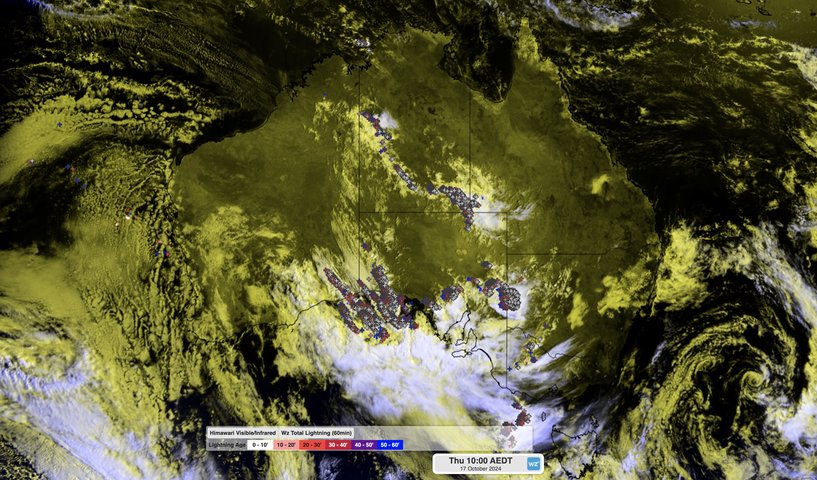Thunderstorms were rumbling across six Australian states on Thursday morning following a barrage of nighttime lighting that produced more than 200,000 strikes across the country.
The video below shows the lightning that was detected over Australia during the 24 hours ending at 11am AEDT on Thursday.
Video: Lightning strikes over Australia during the 24 hours ending at 11am AEDT on Thursday, October 17, 2024.
Last night’s prolific thunderstorm activity was produced by a broad area of low pressure interacting with tropical moisture and an unstable atmosphere.
Total Lightning Network detected around 200,000 lightning pulses over southern and central Australia between Wednesday evening and Thursday morning, with more lightning detected over northern and southeastern parts of the country.
Thunderstorms will continue over a broad area of southern and southeastern Australia on Thursday and Friday and severe thunderstorms are likely in multiple states on both days. Some storms in the next 48 hours could become very dangerous, with squall lines, supercells, destructive winds, giant hail and tornadoes all possible.
In addition to the severe storms, damaging winds are expected to hit parts of SA on Thursday before spreading to elevated areas of Vic and possibly southern NSW on Thursday night into Friday.
DTN’s Total Lightning Network is your key to precise detection and alerting, giving you time to protect your people and assets.
The shifting climate is bringing increasingly severe weather events, so it’s time to safeguard your business against the potential damage lightning can cause.
Our Total Lightning Network is the intelligent solution that goes above and beyond to increase your lead time before the storm hits.
We ultilise a vast global sensor network, created with our partner Earth Networks. Over 1200 sensors in 40+ countries provide a worldwide view of both intra-cloud (IC) and cloud-to-ground (CG) lightning strikes, enabling businesses to plan and respond with the most precise insight available.
Offering unsurpassed accuracy, with real-time detection to <200m, we integrate with your existing systems to keep your enterprise operating within your defined severe weather thresholds.
Leave nothing to chance. Be confident working outdoors with the most sophisticated lightning alerting system, delivering intelligence to any device across your business network.
To find out more visit our contact page or email us at apac.sales@dtn.com.






